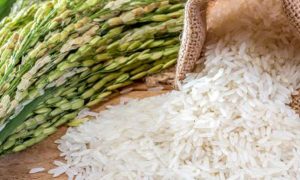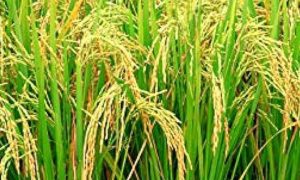High port fees could cripple rice exports

U.S. rice exports could drop 50% if proposed $1M+ port fees on Chinese ships are enacted, warn analysts. The move, part of a Section 301 probe into China’s shipbuilding dominance, risks raising export costs and reducing competitiveness. Industry leaders and lawmakers caution the policy could hurt farmers, tighten margins, and shift buyers to rival markets with cheaper access.
U.S. rice exports could be cut in half if the Office of the U.S. Trade Representative follows through on a proposal to impose port service fees of $1 million or more for each Chinese ship that enters a U.S. port, rice industry analysts say.
USTR, responding to a petition by labor unions that it initiate a Section 301 investigation into Chinese shipbuilding, said it has found the People’s Republic of China is “targeting that sector for dominance and burdening or restricting U.S. commerce.”
While such findings may be true – China is known for pouring billions of yuan into state-sponsored industries such as textile manufacturing at the expense of U.S. textile mills – the proposed port service fees and other penalties would reduce U.S. rice exports by 50%, according to a study by Trade Partnerships Worldwide.
“No foreign competitor has done as much damage to U.S. rice exports,” said Ben Connor, a partner at DTB Agri-Trade, an agricultural trade policy consulting firm based in Washington, D.C. Connor wrote a guest column on the proposed USTR restrictions for the USA Rice Daily.
“If these estimates are even directionally correct, it is concerning that USTR would propose policies so harmful to U.S. farmers,” said Connor, who formerly was vice president of policy at U.S. Wheat Associates, the organization which promotes U.S. wheat exports. Before that he was the legislative and trade assistant for Sen. Mike Johanns, R-Neb.
Shipbuilding investigation
USTR began investigating China’s shipbuilding policies after five trade unions filed a Section 301 petition in March of 2024. The unions, which represent a cross-section of workers in the U.S. shipbuilding industry, said China targets the maritime, logistics and shipbuilding sector for dominance and engages in a “wide range of unreasonable or discriminatory acts, policies and practices that provide unfair advantage across maritime industries.”
The findings by USTR are contained in a 170-page report that outlines how China has increased its shipbuilding market share from less than 5% of global tonnage in 1999 to more than 50% in 2023. China has also increased its ownership of the commercial world fleet to more than 19% as of January 2024, and it now controls production of 95% of shipping containers.
USTR officials discussed imposing fees of $1 million or $1,000 per ton of vessel capacity each time a Chinese-owned vessel enters a U.S. port during a public hearing on the Section 301 investigation on March 24. Other possible fees included up to $1.5 million for a Chinese-built vessel under any ownership and up to $1 million for any company whose ships orders consist of at least 25% Chinese vessels.
U.S. flagged
The officials said the U.S. could also mandate that U.S.-flagged and U.S.-built ships must account for at least 20% of the fleet for companies exporting U.S. goods. No timetable was given for the fees or a U.S. flag mandate.
Connor said the U.S. International Trade Commission released a Section 332 investigative report on March 10 crediting the U.S. rice industry with having a competitive edge due to the U.S. transportation infrastructure.
“These proposed fees would directly impact that, making U.S. rice less competitive compared to other origins,” he said. “Meanwhile, other origins will get cheaper shipping from companies that are trying to avoid the port service fees. And while fees will make U.S. rice more expensive, the restrictions on service will be virtually impossible to meet.”
USA Rice officials said they agree subsidy-driven overcapacity is a legitimate problem, and that U.S. agriculture should be sympathetic – “It is an enormous problem in our sector as well, as the rice industry has found with India, China and other actors who violate their trade commitments.
“USA Rice has advocated for years for its concerns with subsidy-driven overcapacity to be addressed at the World Trade Organization,” it said in its newsletter. “The U.S. took a case and won against China on its rice subsidies in 2019, though this victory was overshadowed by the original Section 301 tariffs, the trade war with China, and subsequent lack of enforcement of both the China Phase One agreement and the WTO case.”
India violations
USA Rice also continues to support a Section 301 case against India, which has violated its WTO commitments for at least a decade with no response from the United States or other foreign governments except various forms of finger-wagging, it said.
It also said the problems with the U.S. shipbuilding industry long predate China’s expansion in the shipbuilding sector, which the petition acknowledges only ramped up after China joined the WTO in 2001.
“USTR cannot turn back time and make vessels built in China disappear,” it said. “They are now an integral part of global shipping, especially for agricultural commodities like rice. Realistic solutions need to take that into account.
“The problem of subsidy-driven overcapacity should have been addressed sooner, before a critical American industry was brought to its knees. Perhaps the Trump administration should keep that lesson in mind as the American rice industry continues its calls for action on subsidy-driven overcapacity in India.”
Rep. Angie Craig, ranking member of the House Agriculture Committee, also cautioned the administration against charging Chinese-built or operated ships $1 million to access U.S. ports if the new fees go into effect.
“At a time when the price of inputs is already high, this port fee will be another added cost to family farmers – making their tight margins even tighter,” said Craig, a Democrat from Minnesota.
“The administration’s ship tax would make it more expensive to do business at U.S. ports, drive up costs for U.S. producers, increase uncertainty about whether they can export their products and push our foreign customers into the arms of competing countries where port access is cheaper.”
To Read more about Rice News continue reading Agriinsite.com
Source : Farm Progress















